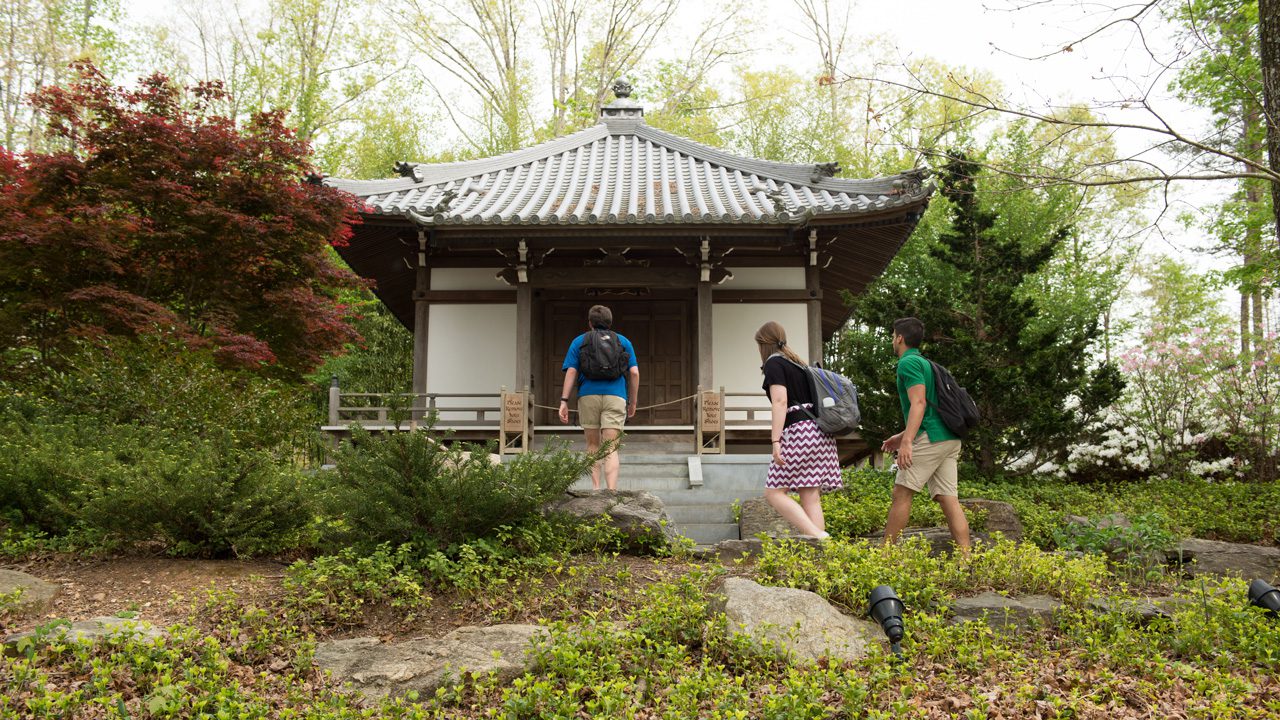Furman’s Asian Studies faculty use The Place of Peace as a vehicle to enhance course curricula and engaged learning. For example, teachers of China-related courses mention the architecture of The Place of Peace as a touchstone for engaging the history, literature, religion, philosophy and art of ancient through mid-imperial China.
Similarly, Furman’s curriculum includes a “Body and Mind” graduation requirement dedicated to the development of whole persons. Courses approved in this category emphasize “fitness” broadly conceived where intellectual, physical, emotional and spiritual well-being are balanced. For example, a course that meets this requirement, titled “Realizing Bodymind,” holds class in The Place of Peace and explores such philosophical and corporeal cultural traditions as breathing arts, meditation and Shinshin Toitsu Aikido.
Furman’s Department of Asian Studies currently administers an outreach program to South Carolina educators. Funded by the Freeman Foundation, the program offers seminars at Furman for South Carolina teachers as an introduction to more extensive study they will encounter in Japan and China. The Place of Peace will be used as an engaged learning teaching space occasioning study of concrete examples of many themes relevant to Asian cultures. Through the efforts of South Carolina teachers, this knowledge will be shared with hundreds of schoolchildren throughout the state.
“The Place of Peace” is not this building alone. “The Place” actually refers to the whole hillside and Asia Garden environment meant to facilitate reflection, deep calmness and connection. In this beautiful setting, one may seek peace of body, mind and spirit while broadening one’s awareness of global cultures.
